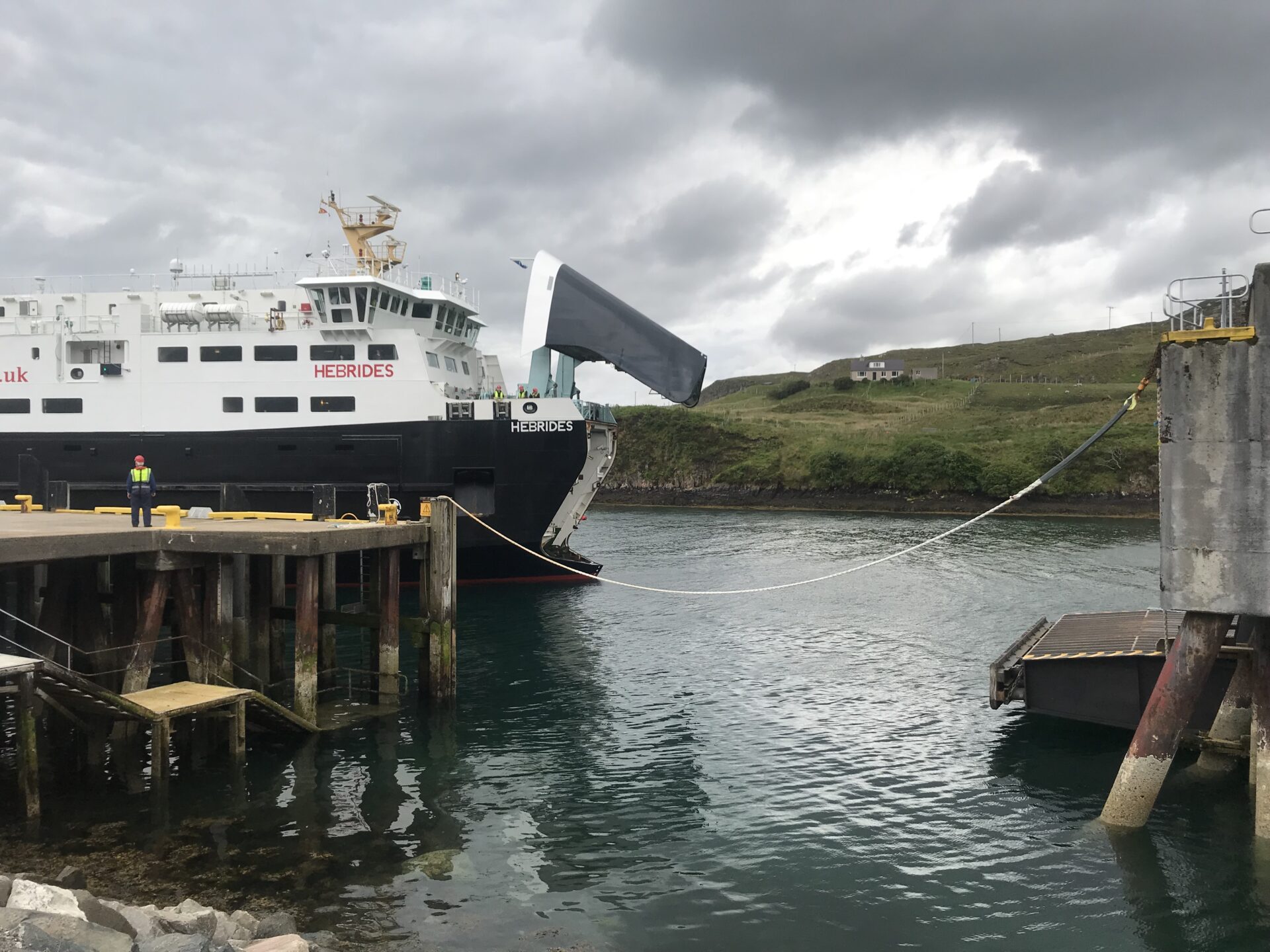Additional ferry sailings could unlock islands’ economic potential
Additional ferry sailings could unlock islands’ economic potential, says HITRANS
A strong case has been put forward for three daily return ferry services in the Little Minch which would bring significant benefits to islanders, businesses and tourists.
Regional transport partnership HITRANS has carried out research on potential future links by new vessels between Uig and Tarbert and between Uig and Lochmaddy next summer.
HITRANS consulted with a range of individuals and organisations either based in or operating in Uist or Harris.
It says three sailing is an essential move towards unlocking the full economic potential of the areas served.
Two new CalMac ferries – the MV Claymore and MV Lochmore – are due to start operating next year.
A proposed service, with only two sailings per day, will mean residents facing limited flexibility and unreliable scheduling, according to HITRANS.
But it says adding a third sailing would reduce current constraints and be more convenient for users, particularly those travelling for work, education, medical appointments, or other essential activities.
Other benefits include –
- Reducing operating costs for businesses by avoiding overnight stays when scheduling deliveries and services
- Increasing visits to the islands, including day trips
- Tapping into the burgeoning visitor market in Skye
- Allowing islanders more opportunities to visit the mainland
- Attracting and retaining more people to live and work in the islands
- The potential to support major economic investment in the islands including Spaceport 1 in Uist and over £8 billion in renewable energy projects
HITRANS’ position is set out in a letter from partnership director Ranald Robertson to Jennifer Dewar, CalMac Ferries’ timetable planning lead.
Mr Robertson said: “The opportunity available by delivering three return sailings per day across the Little Minch routes is a step forward in improving accessibility, supporting local businesses and driving economic growth that will be crucial to the whole of Scotland, not just the Western Isles.
“By reducing operational costs for businesses, improving the visitor experience and making the islands more accessible to residents, this change would bring tangible benefits for all.
“The case for additional sailings is not just about boosting tourism, but about making life on the islands more sustainable, more affordable, and more economically vibrant.”
Mr Robertson said with only two services per day many people are forced to either plan their trips around the current timetable or endure long waits between sailings.
“Adding a third sailing would not only provide much-needed flexibility but also enhance the daily convenience for residents, allowing for more spontaneous travel and reducing the constraints imposed by the current system”, he said.
He pointed out tourists are often deterred from visiting the islands due to limited travel options and time they can spend there.
More frequent sailings would help attract more visitors, encouraging longer stays and greater spending on local services, accommodation and attractions.
A day trip market from Skye will also become a reality, he said.
HITRANS’ research showed a three-sailings timetable would provide a day trip of five hours 45 minutes in either Harris or Uist.
That compares with 4 hours 15 minutes under the two-sailings timetable.
Additional sailings would also allow Harris and Uist residents around 11 hours on the mainland before travelling back on the last ferry.
This compares to only six hours 45 minutes under the two-sailings timetable.
HITRANS also raised the possibility of the £115 million ferries being left as “underemployed assets” under the two-sailings plan.
“It can be argued that operating only two sailings per day would represent poor utilisation of what is critical and expensive infrastructure.
“A frequency of three sailings per day would be in line with what is provided on, for example, the Ullapool-Stornoway route.
“It can be seen as an essential step towards unlocking the full economic potential of the areas served.
Mr Robertson said the timetable favoured by Calmac Ferries Limited represents a “significant negative impact” on public transport connectivity.
He said it would abandon decades-long connections between Uig and the Scottish Citylink services, which provide vital links to Portree, Inverness and Glasgow.
This contrasts starkly with the objectives of the Islands Connectivity Plan, which recognises the importance of maintaining and improving public transport links to support the islands’ sustainable development and economic growth.
It also runs counter to the Scottish Government’s commitment to reducing car kilometres by 20% by 2030.
“The loss of these connections would make it more difficult for residents to travel efficiently by public transport, increasing reliance on private vehicles, which contradicts the broader sustainability goals set out by the Scottish Government.”
For more information contact –
Ranald Robertson 07717 425225 ranald.robertson@hitrans.org.uk
Or
Neil MacRae, partnership manager, 07798 561292 Neil.MacRae@hitrans.org.uk
